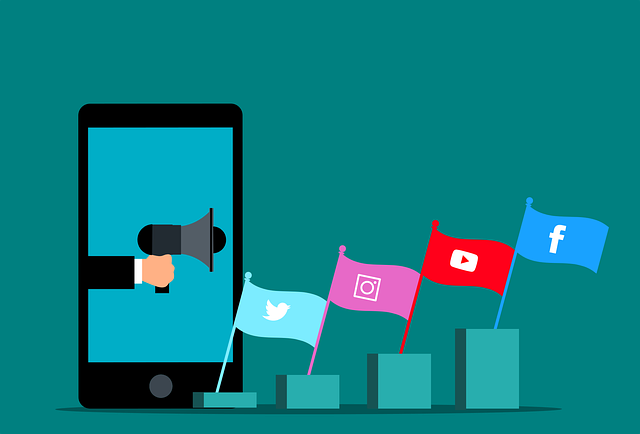Organizing a conference involves meticulous planning and coordination. However, to ensure its success, marketing the event effectively is crucial. Whether it’s a small workshop or a large industry conference, getting the word out and attracting attendees requires a strategic approach. This article will guide you through actionable and tactical strategies to market your conference, ensuring maximum visibility and engagement.
Building a Strong Online Presence
Creating a Dedicated Conference Website
A dedicated website for your conference serves as the hub of all information. Ensure it’s visually appealing, easy to navigate, and mobile-friendly.
Include essential details such as the event agenda, speaker profiles, registration information, and venue details. High-quality images and videos from past events can make the site more engaging.
Optimize the website for search engines by using relevant keywords, such as the conference name, topics, and location. This helps improve its visibility on search engine results pages, attracting organic traffic from potential attendees searching for events in your field.
Leveraging SEO for Increased Visibility
Implementing search engine optimization (SEO) techniques is critical for driving organic traffic to your conference website. Conduct keyword research to identify the terms potential attendees might use when looking for conferences.
Integrate these keywords naturally throughout your site’s content, including in titles, headers, and meta descriptions. Regularly update your website with fresh content, such as blog posts, speaker interviews, and industry news.
This not only keeps your site current but also helps improve its search engine ranking. Additionally, ensure that your site is fast-loading and mobile-responsive, as these factors also influence SEO.
Utilizing Content Marketing
Content marketing can significantly boost your conference’s visibility and credibility. Start a blog on your conference website where you post regular updates, industry insights, and guest articles from your speakers. Share success stories and testimonials from previous events to build trust and excitement.
Create a content calendar to plan your posts leading up to the conference. This keeps your audience engaged and informed. Share these blog posts on your social media channels and in email newsletters to reach a broader audience.
Engaging Social Media Strategies
Choosing the Right Platforms
Identify which social media platforms your target audience frequents and focus your efforts there. LinkedIn is particularly effective for professional and industry-specific conferences, while Facebook and Twitter can be great for broader appeal.
Instagram is ideal for visually engaging content, such as behind-the-scenes shots and speaker highlights.
Creating Engaging Content
Consistently post engaging content that builds excitement for your conference. Share speaker announcements, sneak peeks of the venue, and behind-the-scenes preparations.
Use a mix of photos, videos, and infographics to keep your content diverse and interesting.
Encourage speakers and sponsors to share your posts and create their own content about the event. This not only broadens your reach but also leverages their networks to attract more attendees.
Running Social Media Campaigns
Run targeted social media ad campaigns to reach a wider audience. Use platform-specific targeting options to narrow down your audience by interests, job titles, and locations.
Create compelling ad copy and eye-catching visuals to grab attention and drive clicks to your registration page.
Engage with your audience by responding to comments, answering questions, and participating in relevant discussions. Hosting live Q&A sessions with speakers or organizing contests and giveaways can also increase engagement and build anticipation.
Utilizing Email Marketing
Building an Email List
Building a robust email list is essential for effective email marketing. Collect email addresses through your conference website by offering valuable resources such as early-bird discounts, exclusive content, or industry reports. Ensure you have clear calls-to-action on your site to encourage sign-ups.
Segment your email list based on various criteria, such as past attendees, industry professionals, and location. This allows you to send targeted messages that are relevant to each group, increasing the likelihood of engagement.
Crafting Compelling Email Campaigns
Create a series of email campaigns that build anticipation and provide valuable information. Start with a save-the-date email, followed by announcements of keynote speakers, session highlights, and special offers.
Use personalized email copy to address recipients by name and tailor the content to their interests.
Include clear and compelling calls-to-action in each email, directing recipients to register for the conference, share the event with colleagues, or follow your social media channels for updates.
Track the performance of your email campaigns using analytics to refine your strategy and improve open and click-through rates.
Offering Exclusive Content
Offer exclusive content to your email subscribers to keep them engaged and excited about the conference. This could include early access to speaker presentations, behind-the-scenes looks at event preparations, or special networking opportunities.
Providing value through exclusive content helps build a sense of community and loyalty among your subscribers.
Engaging with Influencers and Partners
Collaborating with Industry Influencers
Partnering with industry influencers can significantly boost the visibility of your conference. Identify key influencers in your industry who have a large following and high engagement rates.
Reach out to them with a compelling pitch about your conference, highlighting how it aligns with their interests and audience.
Offer influencers incentives such as free tickets, speaking opportunities, or promotional partnerships. In return, ask them to promote your event through their social media channels, blogs, and newsletters.
Influencer endorsements can lend credibility to your conference and attract a broader audience.
Forming Partnerships with Relevant Organizations
Collaborate with organizations that share your target audience. These could include industry associations, academic institutions, or professional networks.
Offer them partnership packages that include co-branding opportunities, discounted group rates, and promotional materials.
In exchange, request that they promote your conference through their communication channels, such as newsletters, social media, and website banners.
Partnerships with reputable organizations can enhance your conference’s reputation and reach a wider audience.
Engaging Sponsors for Promotion
Leverage your sponsors’ networks to amplify your conference marketing efforts. Work closely with sponsors to create co-branded promotional materials, including social media posts, email newsletters, and website banners.
Encourage sponsors to share these materials with their audiences, highlighting their involvement in your event.
Provide sponsors with tools and resources to promote the conference, such as pre-written social media posts, graphics, and email templates. This makes it easier for them to spread the word and ensures consistent messaging across all channels.
Utilizing Video Marketing
Creating Promotional Videos
Video content is highly engaging and can effectively convey the excitement and value of your conference. Create a series of promotional videos that highlight key aspects of the event, such as speaker lineups, session previews, and attendee testimonials. Keep the videos short, visually appealing, and informative.
Share these videos on your website, social media channels, and in email campaigns. Consider running video ads on platforms like YouTube and Facebook to reach a wider audience.
Engaging video content can capture attention and drive registrations.
Hosting Webinars and Live Streams
Host webinars and live streams leading up to the conference to build anticipation and engage potential attendees. Invite speakers to participate in these sessions, giving them a platform to share insights and generate interest in their presentations.
Promote these webinars through your marketing channels, and offer them as exclusive content to your email subscribers. Recording the sessions and making them available on-demand can provide ongoing value and attract late registrants.
Creating Post-Event Videos
After the conference, create post-event videos that capture highlights, key takeaways, and attendee experiences. Share these videos on your website and social media to showcase the success of the event and build anticipation for future conferences.
Use these videos as promotional materials for next year’s event, demonstrating the value and impact of attending. Post-event videos can also serve as a thank-you to attendees, reinforcing their positive experience and encouraging repeat attendance.
Implementing Event Technology
Utilizing Event Apps
Event apps can enhance the attendee experience and streamline communication. Develop a mobile app for your conference that includes features such as the event schedule, speaker bios, session descriptions, and interactive maps.
Include push notifications to keep attendees informed about schedule changes, announcements, and special offers.
Encourage networking by incorporating features like attendee profiles, messaging, and social media integration. An event app can provide a centralized hub for all event-related information and foster a sense of community among attendees.
Offering Virtual Attendance Options
Incorporating virtual attendance options can expand your conference’s reach and accommodate those who cannot attend in person. Offer live streaming of key sessions, virtual networking opportunities, and interactive Q&A sessions with speakers.
Promote these virtual options through your marketing channels, highlighting the flexibility and accessibility they provide. Offering both in-person and virtual attendance can increase your audience and ensure a more inclusive event.
Using Data Analytics
Leverage data analytics to optimize your conference marketing efforts and improve the attendee experience. Track key metrics such as registration numbers, website traffic, social media engagement, and email open rates.
Use this data to identify trends, measure the effectiveness of your marketing campaigns, and make data-driven decisions.
Collect feedback from attendees through surveys and analyze their responses to identify areas for improvement. Data analytics can provide valuable insights that help you refine your strategies and deliver a better conference experience.
Enhancing On-Site Experience

Designing an Intuitive Registration Process
The registration process is the first interaction attendees will have with your conference on-site, and it sets the tone for the entire event. Create a streamlined, efficient registration system that minimizes wait times and reduces stress for attendees.
Utilize technology such as self-service kiosks and mobile check-in options to expedite the process.
Train your staff to be friendly and knowledgeable, ready to assist attendees with any questions or issues. Providing a well-organized registration area with clear signage and directions ensures a smooth start for your attendees.
Creating a Welcoming Environment
A welcoming environment can significantly enhance the attendee experience. Design your venue layout to be inviting and comfortable.
Use branding elements such as banners, signage, and color schemes that reflect your conference’s theme and create a cohesive look.
Set up lounge areas where attendees can relax and network between sessions. Offer complimentary refreshments, comfortable seating, and charging stations for mobile devices. A well-thought-out environment makes attendees feel valued and enhances their overall experience.
Providing Comprehensive Event Materials
Comprehensive event materials are essential for helping attendees navigate the conference and make the most of their experience.
Provide printed and digital versions of the conference agenda, speaker bios, session descriptions, and venue maps. Ensure these materials are easy to read and visually appealing.
Include information about local attractions, dining options, and transportation for out-of-town attendees. Providing all the necessary information in a convenient format helps attendees feel more comfortable and prepared.
Implementing Interactive Technologies
Interactive technologies can transform the on-site experience, making it more engaging and memorable. Use mobile event apps to provide real-time updates, interactive maps, and personalized schedules.
Incorporate features such as live polling, Q&A sessions, and social media integration to encourage attendee participation.
Augmented reality (AR) and virtual reality (VR) experiences can also add a unique dimension to your conference. Create AR-enabled exhibits or VR simulations that align with your conference themes, providing attendees with immersive and educational experiences.
Offering Personalized Experiences
Personalization can greatly enhance attendee satisfaction. Use data collected during the registration process to tailor experiences to individual preferences.
Offer personalized welcome messages, session recommendations, and networking opportunities based on attendee profiles.
Create a VIP experience for select attendees with exclusive access to special sessions, meet-and-greets with speakers, and premium amenities. Personalization shows attendees that you value their participation and are committed to providing a unique and memorable experience.
Facilitating Effective Networking
Networking is a primary reason many attendees participate in conferences. Facilitate effective networking by creating various opportunities for attendees to connect.
Organize structured networking sessions such as speed networking, roundtable discussions, and themed meetups.
Use technology to enhance networking opportunities. Provide matchmaking tools through your event app that connect attendees based on shared interests and goals. Encourage attendees to complete their profiles and actively engage with the app’s networking features.
Ensuring Seamless Event Logistics
Seamless event logistics are crucial for a positive attendee experience. Coordinate with your venue to ensure all facilities are clean, well-maintained, and easily accessible.
Arrange for clear signage throughout the venue to guide attendees to different sessions, restrooms, and amenities.
Prepare for any potential issues by having a dedicated logistics team on-site. This team should be ready to address any problems that arise, from technical difficulties to lost items.
Efficient logistics management helps ensure the event runs smoothly and attendees have a stress-free experience.
Offering Quality Food and Beverage Options
The quality of food and beverages can significantly impact the attendee experience. Provide a variety of options that cater to different dietary preferences and restrictions.
Offer healthy choices, as well as indulgent treats, to accommodate all tastes.
Set up multiple food stations to reduce wait times and encourage networking during meal breaks. Consider partnering with local vendors to provide unique and high-quality food offerings.
Ensuring attendees have access to good food and drinks keeps them energized and satisfied throughout the event.
Capturing and Sharing Live Content
Capture live content during the conference to share with attendees and those who couldn’t attend. Hire professional photographers and videographers to document key moments, sessions, and networking events.
Live stream popular sessions to engage a broader audience and provide value to virtual attendees.
Share this content in real-time through your social media channels, event app, and website. Post-event, create highlight reels and photo galleries that attendees can revisit and share.
Capturing and sharing live content extends the reach of your conference and keeps the excitement alive.
Collecting Real-Time Feedback
Collecting real-time feedback allows you to address issues promptly and improve the on-site experience. Use mobile apps, digital kiosks, and QR codes to gather feedback from attendees throughout the event.
Ask for their opinions on sessions, speakers, logistics, and overall satisfaction.
Analyze the feedback regularly and make adjustments as needed. This proactive approach shows attendees that you value their input and are committed to enhancing their experience.
It also provides valuable insights for planning future conferences.
Creating a Memorable Closing Experience
The closing experience is your last opportunity to leave a lasting impression on attendees. Plan a memorable closing session that recaps the key takeaways, thanks attendees for their participation, and builds excitement for future events. Incorporate engaging elements such as keynote speeches, entertainment, and interactive activities.
Provide attendees with a final opportunity to network and reflect on their experience.
Offer take-home materials such as conference swag, certificates of participation, and access to on-demand content. A well-executed closing experience ensures attendees leave with positive memories and a sense of value.
Gathering and Utilizing Feedback
Conducting Post-Event Surveys
Gathering feedback from attendees is essential for understanding their experience and identifying areas for improvement. Send out post-event surveys to collect their thoughts on various aspects of the conference, such as session content, speaker quality, venue, and overall organization.
Use the feedback to identify strengths and weaknesses and make necessary adjustments for future events. Sharing the survey results with your planning team and stakeholders can help ensure that their input is considered in the decision-making process.
Analyzing Feedback Data
Analyze the feedback data to uncover trends and patterns. Look for common themes in the responses and prioritize the areas that need the most attention.
Use this data to create an action plan for addressing the identified issues and enhancing the attendee experience.
Consider segmenting the feedback by attendee type, such as first-time attendees, returning attendees, and speakers. This can provide more detailed insights into the specific needs and preferences of different groups.
Communicating Improvements
Communicate the improvements you plan to make based on the feedback you received. This shows attendees that you value their input and are committed to enhancing their experience.
Share updates through your email newsletters, social media channels, and conference website.
Highlighting the changes and improvements can also build anticipation for future events and encourage attendees to return. Transparency and responsiveness to feedback can strengthen your relationship with attendees and build loyalty.
Building Strategic Partnerships
Engaging with Industry Associations
Partnering with industry associations can significantly enhance the credibility and reach of your conference. Reach out to relevant associations and propose a mutually beneficial partnership.
Offer them opportunities such as speaking slots, exhibit spaces, or promotional visibility at your event.
Associations often have extensive networks and can help promote your conference through their communication channels, such as newsletters, social media, and member meetings.
This collaboration can also provide access to a pool of industry experts and thought leaders who can add value to your conference program.
Collaborating with Academic Institutions
Academic institutions are valuable partners, especially for conferences focused on research, technology, and innovation. Establish relationships with universities, colleges, and research centers that align with your conference’s themes.
Offer discounted registration rates or sponsorship opportunities for academic staff and students.
Invite faculty members and researchers to participate as speakers or panelists, and encourage them to present their latest research findings. Promoting these academic collaborations can attract attendees interested in cutting-edge knowledge and foster an environment of learning and discovery.
Leveraging Corporate Partnerships
Corporate partnerships can provide substantial financial support and resources for your conference. Identify companies that align with your event’s goals and audience, and propose tailored partnership packages.
These packages can include branding opportunities, exhibit spaces, speaking engagements, and sponsored sessions.
Work closely with your corporate partners to co-create valuable content and experiences for attendees. For instance, collaborate on workshops, product demonstrations, or networking events. Highlight these partnerships in your marketing materials to attract attendees interested in the partner companies’ expertise and innovations.
Enhancing Pre-Conference Engagement

Hosting Pre-Event Webinars
Pre-event webinars can generate excitement and provide valuable insights before the conference. Organize a series of webinars featuring your keynote speakers or industry experts.
These sessions can offer previews of the topics that will be covered at the conference, allowing attendees to gain early access to valuable content.
Promote these webinars through your email list, social media channels, and partner networks. Recording the webinars and making them available on-demand can also serve as a promotional tool to attract last-minute registrants.
Creating an Online Community
Building an online community around your conference can enhance pre-event engagement and foster networking. Create a dedicated forum or social media group where registered attendees can connect, discuss topics of interest, and share their expectations for the event.
Facilitate discussions by posting conversation starters, relevant articles, and updates about the conference. Encourage speakers and sponsors to join the community and interact with attendees.
This pre-event networking can help attendees feel more connected and excited about participating in the conference.
Offering Early-Bird Incentives
Offering early-bird incentives can drive early registrations and create momentum for your conference. Provide discounts, exclusive access to content, or special perks for attendees who register early.
Clearly communicate the benefits of early registration in your marketing materials.
Track the success of your early-bird campaign and use the data to adjust your strategy. If certain incentives are particularly effective, consider extending similar offers closer to the event to boost last-minute registrations.
Creating a Compelling Conference Program
Curating High-Quality Content
The quality of your conference content is a key factor in attracting attendees. Curate a diverse program that includes keynote speeches, panel discussions, workshops, and interactive sessions.
Focus on relevant, timely topics that address the needs and interests of your target audience.
Engage with industry leaders, influencers, and experts to secure high-profile speakers. Provide them with clear guidelines and support to ensure their presentations are engaging and aligned with the conference’s objectives.
High-quality content can enhance the reputation of your conference and encourage word-of-mouth promotion.
Incorporating Interactive Elements
Interactive elements can make your conference more engaging and memorable. Incorporate activities such as live polls, Q&A sessions, and group discussions into your program. Use technology to facilitate real-time interactions, such as mobile apps or audience response systems.
Encourage speakers to include interactive components in their presentations, such as case studies, demonstrations, or hands-on exercises. Interactive sessions can increase attendee participation and satisfaction, making the event more dynamic and enjoyable.
Providing Networking Opportunities
Networking is a crucial aspect of any conference. Design your program to include ample opportunities for attendees to connect and build relationships.
Schedule dedicated networking breaks, social events, and informal meetups throughout the event.
Facilitate networking by providing tools such as matchmaking apps, attendee directories, or themed networking sessions. Creating a welcoming and inclusive environment for networking can enhance the overall attendee experience and foster long-term professional connections.
Post-Conference Strategies
Sharing Conference Highlights
After the conference, share highlights and key takeaways with your audience. Create a comprehensive post-event report that includes summaries of sessions, speaker highlights, and attendee feedback.
Share this report on your website, social media channels, and through email newsletters.
Include photos, videos, and quotes from the event to make the highlights more engaging. Post-event content can keep the momentum going and serve as a valuable resource for attendees and those who couldn’t attend.
Collecting and Analyzing Feedback
Gathering feedback from attendees is essential for continuous improvement. Send out post-event surveys to collect their thoughts on various aspects of the conference, such as content quality, speaker performance, and logistical arrangements.
Use this feedback to identify strengths and areas for improvement.
Analyze the feedback data to uncover trends and make data-driven decisions for future events. Sharing the survey results with your planning team and stakeholders can help ensure that their input is considered in the decision-making process.
Planning Future Events
Use the insights gained from your conference to start planning future events. Identify what worked well and what could be improved, and use this information to refine your strategies.
Begin promoting your next conference early, leveraging the positive experiences and feedback from this year’s event.
Engage with your audience throughout the year by sharing relevant content, hosting smaller events, or maintaining an online community. Keeping the conversation going can build anticipation and ensure sustained interest in your future conferences.
Leveraging PR and Media Outreach
Developing a Media Kit
Creating a comprehensive media kit can significantly boost your conference’s visibility. A media kit should include essential information about your event, such as the conference agenda, speaker bios, press releases, high-quality images, and past event highlights.
This provides journalists and media outlets with all the necessary materials to cover your event.
Ensure your media kit is easily accessible on your conference website. Update it regularly to reflect any new developments or changes. By making it simple for the media to get the information they need, you increase the likelihood of gaining coverage.
Writing and Distributing Press Releases
Press releases are a powerful tool for generating media interest. Write compelling press releases for major announcements, such as the launch of the conference, keynote speaker announcements, and partnerships.
Focus on the newsworthy aspects of your event and provide clear, concise information.
Distribute your press releases through reputable distribution services to reach a wide range of media outlets. Additionally, build a list of targeted media contacts within your industry and send them personalized emails with your press release. Follow up with these contacts to increase the chances of getting coverage.
Engaging with Journalists and Bloggers
Build relationships with journalists and bloggers who cover your industry. Reach out to them well in advance of your event with information about your conference and why it would be of interest to their audience.
Offer them exclusive interviews with speakers, free press passes, or early access to content.
Invite journalists and bloggers to attend your conference and provide them with a positive experience. This could include arranging interviews with key speakers, providing a comfortable press area, and offering networking opportunities. Positive media coverage can enhance your conference’s reputation and attract more attendees.
Utilizing Influencer Marketing
Identifying Key Influencers
Identify influencers in your industry who have a significant following and engage with your target audience. These could be thought leaders, industry experts, or popular bloggers and vloggers.
Research their content and engagement rates to ensure they align with your conference’s themes and goals.
Reach out to these influencers with a personalized pitch, explaining how partnering with your conference can benefit both parties. Highlight any unique opportunities, such as speaking slots, exclusive content, or promotional partnerships. Influencers can help amplify your message and attract a larger audience.
Creating Collaborative Content
Work with influencers to create collaborative content that promotes your conference. This could include blog posts, videos, social media takeovers, or podcasts.
Collaborative content allows influencers to share your event with their audience in an authentic and engaging way.
Encourage influencers to share behind-the-scenes content, interviews with speakers, or highlights from past events. This not only generates buzz but also provides valuable insights and builds excitement among potential attendees.
Hosting Influencer-Led Sessions
Invite influencers to lead sessions or workshops at your conference. This adds value to your program and attracts their followers to attend.
Promote these influencer-led sessions through your marketing channels and encourage influencers to share the news with their audience.
Highlighting influencers’ participation in your conference can boost credibility and attract attendees who are interested in hearing from respected voices in the industry. This collaboration can create a win-win situation for both your event and the influencers involved.
Enhancing Networking Opportunities
Organizing Pre-Conference Networking Events
Pre-conference networking events can help attendees connect and build relationships before the main event. Organize informal meetups, dinners, or social gatherings in the days leading up to your conference.
Promote these events through your marketing channels and encourage early registrants to attend.
Creating opportunities for attendees to network beforehand can enhance their overall experience and make them more likely to participate actively during the conference. It also helps to build a sense of community and excitement around your event.
Implementing Networking Tools
Utilize networking tools and apps to facilitate connections among attendees. Provide features such as matchmaking based on interests, one-on-one meeting scheduling, and virtual business card exchanges.
These tools can help attendees make meaningful connections and maximize their networking opportunities.
Promote the use of these tools through your event app, website, and social media channels. Providing a seamless networking experience can enhance attendee satisfaction and encourage repeat attendance.
Hosting Structured Networking Sessions
Incorporate structured networking sessions into your conference program. These could include speed networking, roundtable discussions, or themed networking breaks.
Structured sessions provide a focused environment for attendees to connect and share insights.
Ensure that these sessions are well-organized and facilitated to maximize their effectiveness. Providing guidance and support can help attendees feel more comfortable and engaged, leading to more fruitful networking opportunities.
Maximizing Post-Conference Engagement

Sharing Post-Event Content
After the conference, share key highlights and takeaways with your audience. Create blog posts, social media updates, and email newsletters that summarize the most important sessions, speaker insights, and attendee experiences. Include multimedia content such as videos, photos, and infographics to make the content more engaging.
Posting content that recaps the event can keep the momentum going and provide value to those who attended, as well as to those who couldn’t make it. It also helps to maintain engagement with your audience and build anticipation for future events.
Offering On-Demand Access
Provide on-demand access to recorded sessions and presentations for attendees who want to revisit the content or who missed certain sessions. Offer this access through your conference website or event app. You can also consider offering these recordings as a paid resource for non-attendees, generating additional revenue.
Promote the availability of on-demand content through your marketing channels. Highlighting the benefits of on-demand access can attract more attendees to future events, knowing they won’t miss out on valuable content.
Engaging Attendees Year-Round
Maintain engagement with your conference attendees throughout the year. Share regular updates, industry news, and exclusive content through your email newsletters, social media channels, and online community.
Hosting smaller events, webinars, or meetups can keep your audience connected and engaged.
Building a year-round engagement strategy helps to strengthen relationships with your attendees and keeps your conference top-of-mind. It also provides opportunities for continuous learning and networking, adding value to your audience.
Planning for Future Conferences
Use the insights and feedback gathered from your current conference to start planning future events. Identify what worked well and areas for improvement, and incorporate these learnings into your planning process.
Engage with your audience to gather their input and ideas for future conferences.
Announce the dates and location of your next conference early, and offer early-bird registration discounts to drive early sign-ups. Keeping the momentum going and maintaining communication with your audience can build anticipation and ensure the continued success of your conferences.
Wrapping it up
Effectively marketing your conference involves a multi-faceted approach that focuses on both online and on-site strategies. Building a strong online presence through comprehensive content, high-quality visuals, and advanced SEO is crucial. Engaging social media campaigns, targeted email marketing, and influencer collaborations further amplify your reach.
Enhancing the on-site experience with intuitive registration, welcoming environments, personalized interactions, and seamless logistics ensures attendees have a memorable and positive experience. By implementing these strategic and actionable steps, startup founders can attract more attendees, foster lasting connections, and create a successful conference that stands out in the industry.
READ NEXT:
- Sweet Marketing Strategies to Grow Your Bakery
- Proven Marketing Strategies for Home Inspectors
- How to Market Your Therapy Practice
- Effective Marketing Strategies for Plastic Surgeons
- Crazy and Wild Marketing Ideas to Capture Attention






















Comments are closed.